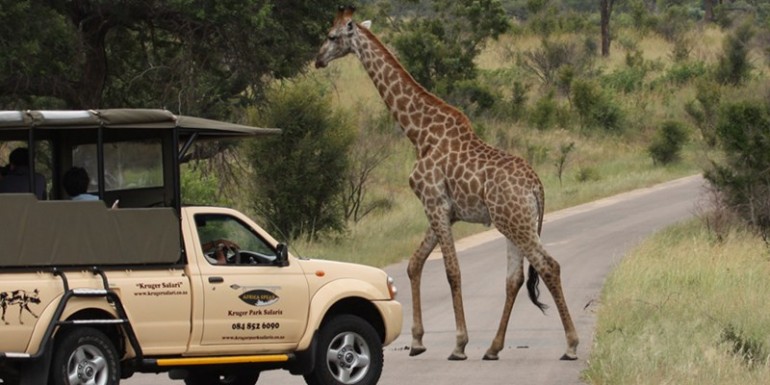Sponsored Listings:
In 2015, Open Safari Vehicle (OSV) operators and SANParks united under the guidance of Satsa to launch an OSV self-regulation initiative in the Kruger National Park.
At the time, SANParks Managing Executive, Tourism Development and Marketing, Glen Phillips, said the open safari vehicle industry had been identified as an area that required better regulation, safety and monitoring. He said SANParks had worked closely with Satsa and the adventure tourism industry to formulate a self-regulation model that was sustainable and would drive growth and transformation.
Now, as the initiative enters its fourth period of renewal, Tourism Update looks at whether it has fulfilled its promises.
Hannelie Du Toit, Chief Operating Officer at Satsa, says: “The self-regulation initiative has grown tremendously. In the first year, we had a total of 275 registered vehicles, at the end of our third cycle we are sitting with 350. It has also resulted in the Kruger National Park having the highest standards for OSVs in the world.”
She adds that despite this achievement, they continue to work on new ways to improve on OSV standards. “As of December 1 we implemented a regulation stating that any new OSV entering the KNP must have the equipment necessary to protect passengers in the case that the vehicle rolls.”
Du Toit says the relationship between the private drivers and OSVs has improved as a result of the self-regulation initiative. “While there is still a long way to go, it has been observed that instead of social media being used as a platform to complain about OSVs, private drivers are also complimenting OSVs for the assistance they provide and are stepping in to defend the industry when complaints are submitted.
“OSV tours are booming in the Kruger,” says Du Toit, but adds that the biggest success of the initiative is that the relationship between SANParks and the OSV tour operators has improved in ‘leaps and bounds’. “When we asked operators, at the end of the first year, whether or not their relationship with SANParks had improved, 71% said yes.”
The result of this has been the development of an unlikely partnership, which has borne fruit for both parties.
“The two entities now see the value in partnering to address industry concerns in the KNP,” says Du Toit. “SANParks just put together a visitor management plan for the next 20 years. During this process every stakeholder was consulted, including the OSV operators. This has resulted in the development of an incredibly robust strategy that will do a lot to boost KNP tourism.”
Du Toit says other areas of success include:
The outsourcing of the permitting process, which operators say is now 83% more efficient.
The promotion of sustainable tourism. “The OSV industry brought 170 000 visitors to the KNP during the 2015/2016 cycle. On average OSV occupancy is 6.9 people per vehicle, however a vehicle can take up to 10. Can you imagine the impact on the park if each of those people visited individually? As a result, OSVs have become a crucial part of SANParks sustainability plan,” says Du Toit.
The protection of wildlife. “As OSVs are familiar with the environment and trained to notice signs of illegal activity, they have been able to assist SANParks by reporting potential poaching cases, facilitating fast and effective response.”
Du Toit adds that the input to SANParks’ visitor management plan is already bearing fruit. “In order to improve efficiency during peak times, the parking at Numbi, Phabeni and Malelane is being extended and temporary offices, which will be dedicated to processing OSV entry to the park, are being established. This construction started in September and is due for completion in early 2018.”
Source: tourismupdate.co.za










